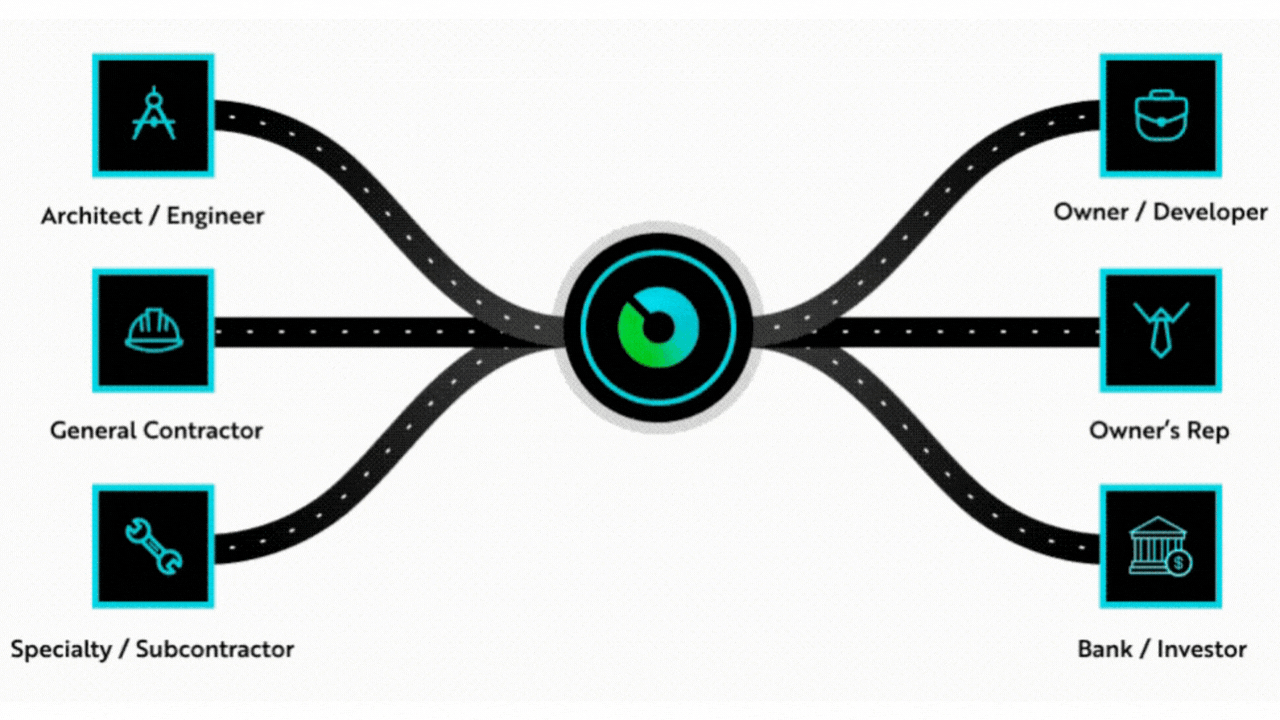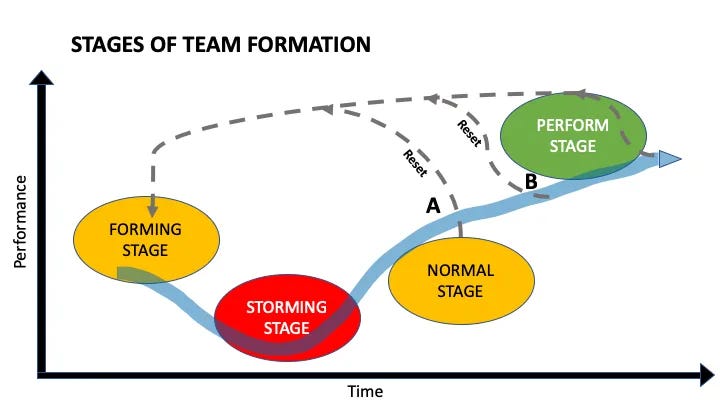👋 Hey, Kyle here! Welcome to The Influential Project Manager, a weekly newsletter covering the essentials of successful project leadership.
Today’s Overview:
No amount of Gantt charts, AI tools, or spreadsheets will fix poor team dynamics. People come first, technicalities second.
High-performing teams don’t just happen. Most go through multiple stages to get there.
Psychologist Bruce Tuckman outlined the 4 stages all teams move through: (1) forming, (2) storming, (3) norming, and (4) performing. Learn how to guide your team through these stages to hit peak performance.
📊 In Partnership with INGENIOUS.BUILD!
Managing construction projects is tough. Using multiple tools that don't integrate pulls you away from your main goal—delivering great projects. The good news? I finally found a solution that works—today's sponsor—INGENIOUS.BUILD. It combines project management and financial workflows in one easy-to-use platform.
Here’s what I love:
Billing & Invoicing: Automate your billing, create professional invoices, and speed up payment cycles.
Cash Flow Forecasting: Link your budget and billings to stay on top of your project’s financial health.
Change Orders: Manage everything digitally with real-time updates, so you're never in the dark.
Want to see how it works for you? Join me and dozens of top companies at INGENIOUS.BUILD and upgrade your project operating system today.
⛰️ The 4 Stages of Team Development
Filed under: Leadership & Managing People
Let’s take 2 Project Managers:
One has a detailed plan, the latest AI tools, and takes full control.
The other has a clear purpose, a cohesive team, and empowers others.
🤔 Who would you put your money on?
Let me tell you about a mistake I made early in my career.
I thought having the perfect plan and the best tools was the key to success. I was managing a major healthcare project with all the right tech, but something was off. My team wasn’t clicking and it showed in our outcomes.
There was tension, constant confusion, and constant delays. Despite the tools and plans, the project stalled. The problem? Poor team dynamics. No trust.
What I learned was simple but powerful: No amount of Gantt charts, ConTech, or spreadsheets can replace a strong, cohesive team.
Team first, technicalities second.
That’s why my money is on the project manager who focuses on the people, not just the plan.
🏆 Why Building a Strong Team is Critical
If you don’t focus on team development, here’s what happens: communication breaks down, conflicts arise, and the everyone begins to panic.
You can plan a project according to all the best practices in the world, engineer a flawless production plan for your project, and STILL fail miserably if your team is not healthy and high functioning.
Few teams hit the ground running as high performing. Most go through a multi-stage development process, known as the Tuckman model, which breaks down into four stages:
Forming
Storming
Norming
Performing
Master these stages, and your team will thrive. Skip them, and you’ll face endless friction. Let’s dive in.
Phase 1 – Forming
Get to know each other.
The first stage is forming. Here, everyone is getting to know each other. There’s excitement, but people are unsure of their roles. Everyone’s being polite and typically no one intentionally ruffles feathers.
If you skip this phase, team members may struggle with unclear roles and poor communication.
Clearly define roles and responsibilities.
Perform personality profiles to understand each other’s strengths.
Start building clear communication pathways early.
Laying this foundation will build trust and set the stage for success.
Phase 2 – Storming
Handle conflict head-on.
As the project moves forward, the team hits the storming phase. Here, conflicts arise as people’s working styles clash. The team will begin stepping on each other’s toes.
Again, it may be nothing intentional, but feelings are going to get hurt, someone’s nose is going to get out of joint. Team members are learning about each other. It’s natural and necessary for growth.
If you avoid conflict, the team may become disengaged or frustrated. Instead, guide your team through the storm by addressing conflict head-on.
Encourage open discussions and healthy conflict.
Create a safe space where people can speak up without fear.
Praise team members for bringing up tough issues.
Your team will never develop if you do not lead them through the storming phase. There is no going around.
Embrace this phase, and you’ll come out stronger.
Phase 3 – Norming
Establish routines and systems.
Once conflicts are resolved, your team enters the norming phase. Roles are clearer, and the team begins working more effectively together.
But without established systems, the team can still struggle.
Begin grading team health.
Normalize regular meetings with clear agendas.
Implement consistent communication systems.
Create standards and accountability structures that keep everyone on track.
At this point the leader is crucial to the success of the team. This is where your team starts to find its groove and prepares for high performance.
Phase 4 – Performing
Achieve peak performance.
In this stage, your team is fully in sync. Everyone knows their role, and they’re using their strengths to drive the project forward. The leader takes a step back, and the team runs like a well-oiled machine. The team is so strong, it’s hard to tell who the boss is.
Without reaching this stage, your project will never run as smoothly as it could. To get here, focus on trust and empowering your team.
Celebrate wins as a team.
Delegate responsibilities and trust your team to deliver.
Continue encouraging open communication and feedback.
This is where we want our teams to be. When your team hits this phase, your project will soar. You’ll see a team that gives a lot, spends time with each other, and isn’t afraid to be open and vulnerable.
➡️ Keep Moving Forward
Occasionally, setbacks will throw your team back into earlier phases. That’s normal. What’s important is to guide your team through each stage until they reach peak performance.
By following these steps, you can avoid the same mistake I made. Don’t just rely on tools and plans—invest in your team’s development, and your projects will thrive.
Where’s your team at right now? I’d love to hear your thoughts!
Until next week,
Kyle Nitchen
🧰 Kyle’s Toolbox
Optimize your project with my partner, INGENIOUS.BUILD:
I get asked about the best project management tools all the time. While my recommendations change, INGENIOUS has been a game-changer for many. I use it to collaborate with all project team members from start to finish.
It replaced a bunch of fragmented processes by bringing everything and everyone into one cloud-based workspace. Seriously, its latest iteration INGENIOUS 2.0 is designed to handle all of your daily operations within project financials, project management, and construction administration. With real-time connectivity and data at your fingertips, it transforms you from an administrative project manager into a strategic project leader.
INGENIOUS.BUILD is offering The Influential Project Manager subscribers a special 5% discount. Take advantage of it today!

Whenever you're ready, there are 5 ways I can help you:
Get my first book! No Bullsh*t Project: A Project Manager’s Guide to Successful Project Leadership
Upgrade your scheduling software. Experience the future planning system for construction and real estate development. iPM subscribers can enjoy a 15% discount on first year license.
Get my full toolbox (free). Access 30+ software and hardware tools I'm using today.
Learn Takt Planning. Elevate your skills as a scheduler, planner, and lean builder with the Takt Planning & Control online course. Use code "Influentialpmtakt" for 30% off.
Advertise in my newsletter. Put your brand in front of 5,700+ construction project managers, leaders, and execs. (Booked out 8 weeks)






